Galleries
Christian Jankowski’s Berlin Retrospective at CFA Misses the Point
The show was curated by German stage actress Nina Hoss.
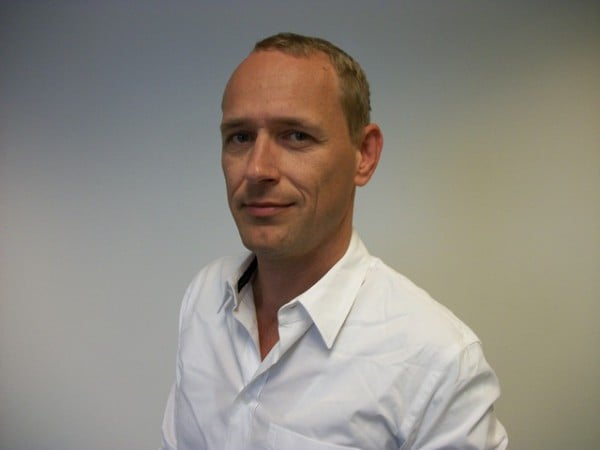
The show was curated by German stage actress Nina Hoss.

Henri Neuendorf

The German video artist Christian Jankowski’s first show at Contemporary Fine Arts since joining the Berlin gallery is a retrospective, curated by the German actress Nina Hoss.
What might seem like an unusual move on the surface is, on closer inspection, just the latest chapter in the artist’s career which has been defined by paradoxes, jest, and attempts to subvert the art world’s traditional structures and boundaries, oftentimes using humour as his strategy.
Before even attending the show, the first thing that catches the eye is that neither the artist nor his work is to be seen on any of the exhibition’s promotional material. Instead, the posters put up all over the city show a flattering photograph of the glamorous actress that took the curatorial reigns for the first time for this project.
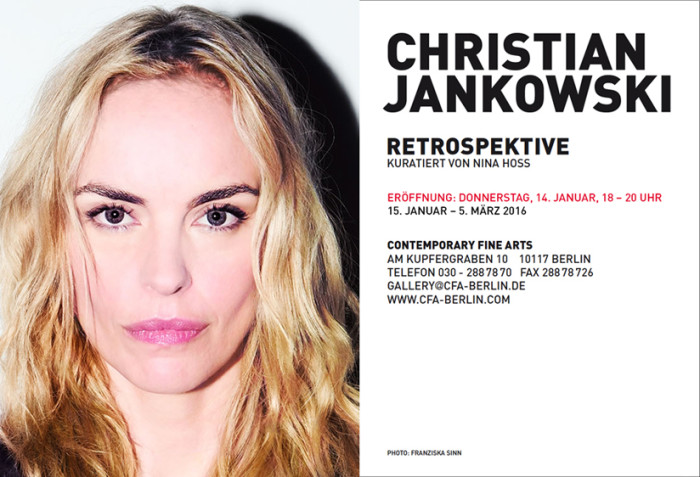
The show was curated by the German stage actress Nina Hoss.
Photo: CFA, Berlin
Handing creative control of his retrospective to a novice curator is a classic Jankowski move. This is of course the same artist that let a security guard at the Kunstmuseum Stuttgart curate his show for a video artwork Dienstbesprechung (2008), in which he asked all museum employees to swap jobs. The whole process of putting together that show was filmed from start to finish by a camera crew hired by the artist, who were not informed about the swap.
In practice, however, Retrospektive’s hanging amounts to a nonsensical jumble of works, poor use of the (abundant) space, and a multitude of impractical installations that make the artworks almost impossible to look at, let alone enjoy. In short, it is painfully clear that the show was curated by an amateur.
The exhibition is split into three sections. The first is a cinema in which the artist’s videos from 1992 to 2015 are played in a loop. One cycle takes over 10 hours (unfortunately the gallery’s opening hours of 10AM to 6PM only allows visitors to watch 8 hours at a time, if one is so inclined).
The second is the main exhibition room, which contains various sculptural installations, and an area dedicated to TV works that can be selected by visitors.
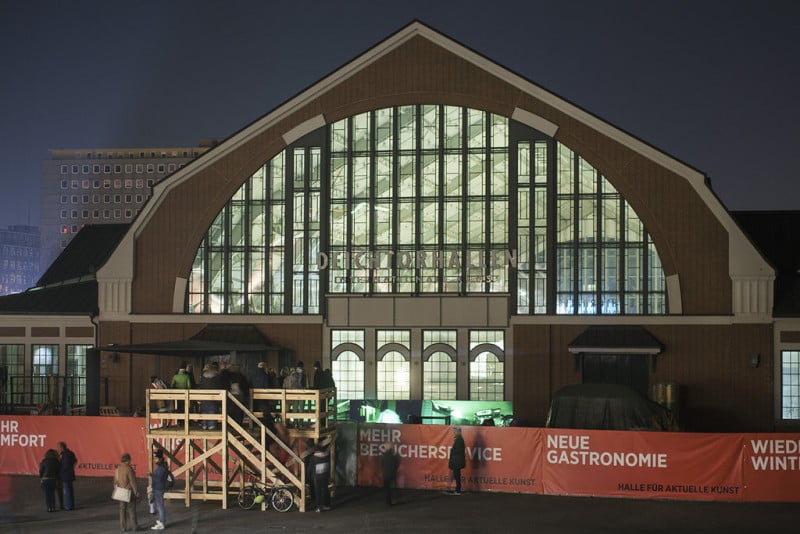
Christian Jankowski Unglaubliches Glück (2014) at Deichtorhallen, Hamburg.
Photo: CFA, Berlin
Taking up approximately 20 percent of the primary exhibition room’s surface area is Jankowski’s Unglaubliches Gluck (2014) which was first presented at Hamburg’s Deichtorhallen.
The construction fence surrounding the venue—which was being renovated at the time—reminded the artist of the Berlin wall. So he asked the museum staff to describe the exhibition within and to swap the names of places with the name of the venue. The original construction fence that inspired the work is now installed in the gallery, and the accompanying video has to be viewed from atop a wooden observation platform elevated 8 feet above the ground.
Viewers have to look up or down a lot in this retrospective, and not only because the exhibition design doesn’t leave much room for taking a few steps back from an artwork for gaining perspective. One of his earliest and most significant works, Die Jagd (1992), where the artist is seen hunting for his groceries at a supermarket, is shown on a pedestal high above the ground.
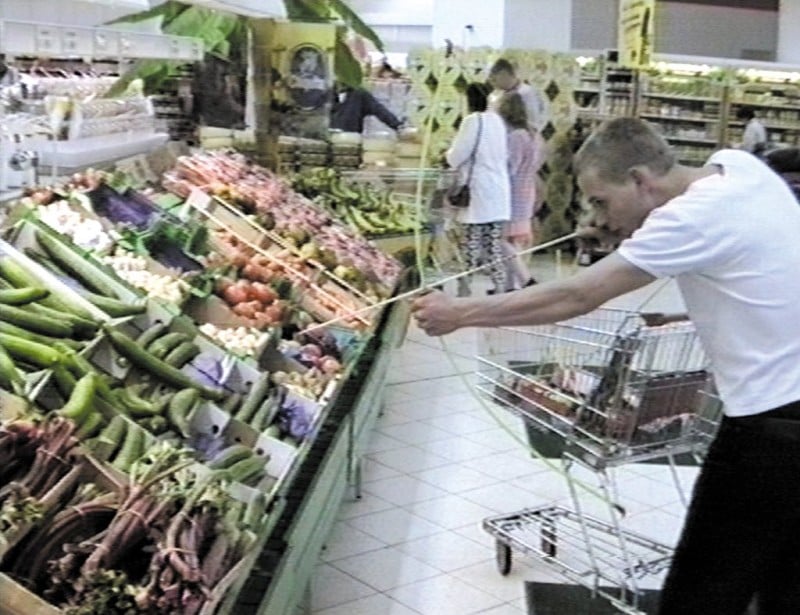
Christian Jankowski Die Jagd (1992)
Photo: CFA, Berlin
Jankowski roams a supermarket with a bow and arrow to “hunt”—yet later pay—for his groceries. The work highlights the absurd, oftentimes futile, yet somehow still victorious moments of trying to break established conventions in modern societies.
The set of Jankowski’s Kochstudio (2004), which shows the artist participating in a TV cooking show, is installed on the far side of the room, while various large-scale photographs including works from Jankowski’s Heavy Weight History series (2013) and Tracey Emin-esque neon works such as Visitors (Jetzt kann ich was mit Videokunst anfangen) (2010), fill the walls, hung salon-style on top of each other.
Other monitors, for instance showing the artist’s Bravo Jankowski! (2013) are placed at about navel height and on the floor. Not ideal.
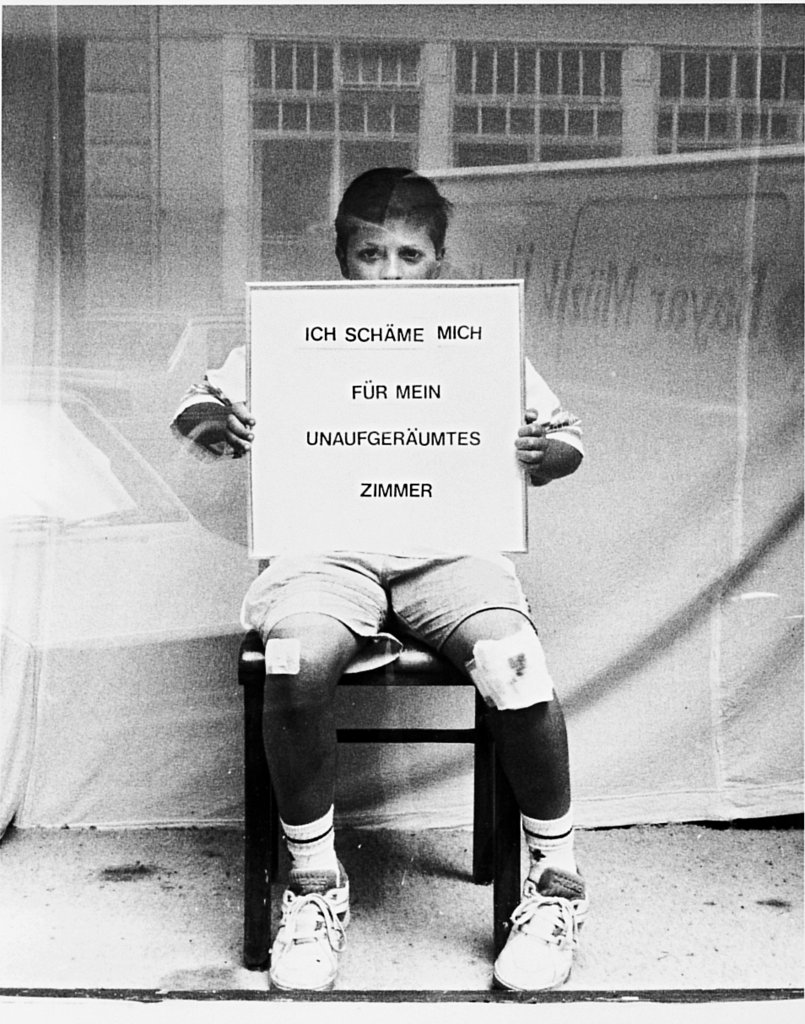
Christian Jankowski Schamkasten (1992/2000)
Photo: CFA, Berlin
Another of Jankowski’s most significant early works Schamkasten (1992)—in which the artist asked volunteers to sit in a shop window holding a sign detailing what they’re most ashamed of—is placed in the rear of the third section. Unfortunately, a large wooden cube containing Jankowski’s The Day We Met (2003) takes up so much space in the same room that Schamkasten is left to run on a small TV in the corner.
A series of photographs showing the participants of Schamkasten are hung on a wall behind the large wooden structure leaving under a meter to view the works. Gallery visitors were forced to shuffle through sideways with the works hanging approximately 30 cm away from their noses. It creates an exceedingly unpleasant and claustrophobic viewing experience.
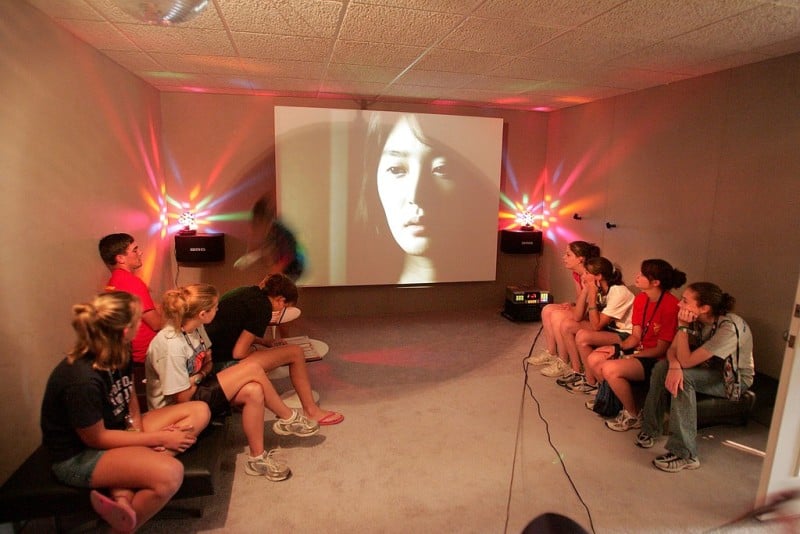
Christian Jankowski The Day We Met (2003)
Photo: CFA, Berlin
Midway through the opening on Thursday evening, Jankowski and Hoss were joined by gallerist Bruno Brunnet in a dull performance in which the artist and curator read their text message correspondence relating to their collaboration aloud from their iPhones, with each reading the other person’s SMS. This attempt at charming the audience felt as awkward as it was mundane. (Though it did provide some insights as to the haste with which the show was conceived).
All in all, the effort made to subvert the classic retrospective by holding it in a gallery and getting an in-demand stage actor to curate it proved unsuccessful, and a great sense of “what could have been” hung over the exhibition.
Where did it all go wrong? Firstly, the gallery didn’t use both of its spacious, light-filled floors to host the retrospective. CFA likes to show two exhibitions parallel to each other, but why not use both floors when there’s so much work to exhibit?
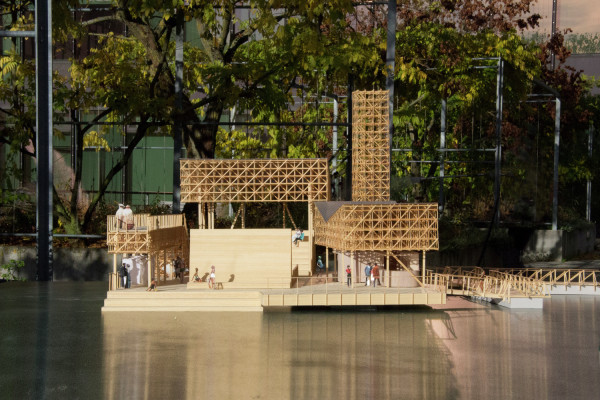
Model of the ‘Pavilon of Reflections’ at Manifesta 11, Zürich, which Jankowski will curate.
Photo: © ETH Studio Emerson
Why tuck significant artworks away in corners? And, why invite a novice to curate such a major exhibition? It came across as gimmicky.
2016 is a big year for Jankowski, who has been given the curatorial responsibility of Manifesta 11, which will be held in Zürich. Prior to the show at CFA, Jankowski told the German Interview magazine in his usual tongue-in-cheek style, “The fear of failure is always there. However, the collaborative way in which I work means I can share part of the blame with others.”
However, now that all eyes are on him only a few months before the opening of Manifesta, facing the disappointment of this retrospective should serve as an exercise in taking the blame when things go wrong.